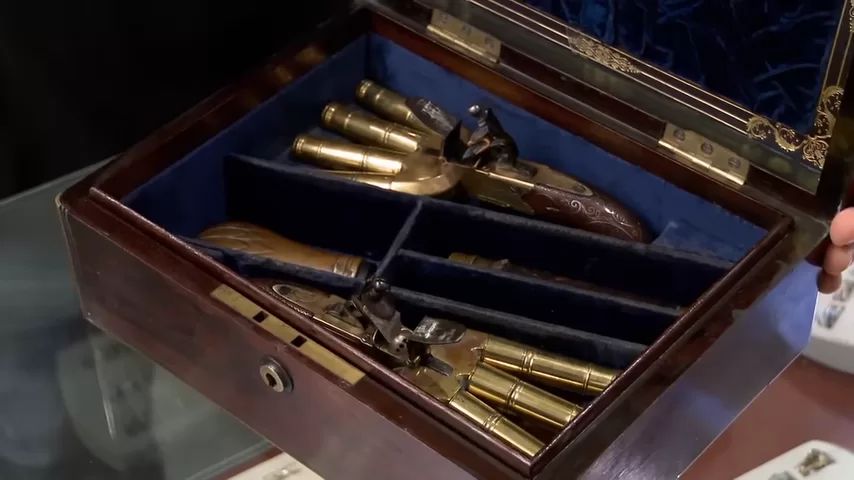Most antique firearms are prized for their craftsmanship, their historical significance—or both. But some stand out simply because they look… strange. That’s exactly what happened when a seller walked into a pawn shop with a pair of rare, brass duck foot pistols, also known as volley pistols, and asked for $50,000.
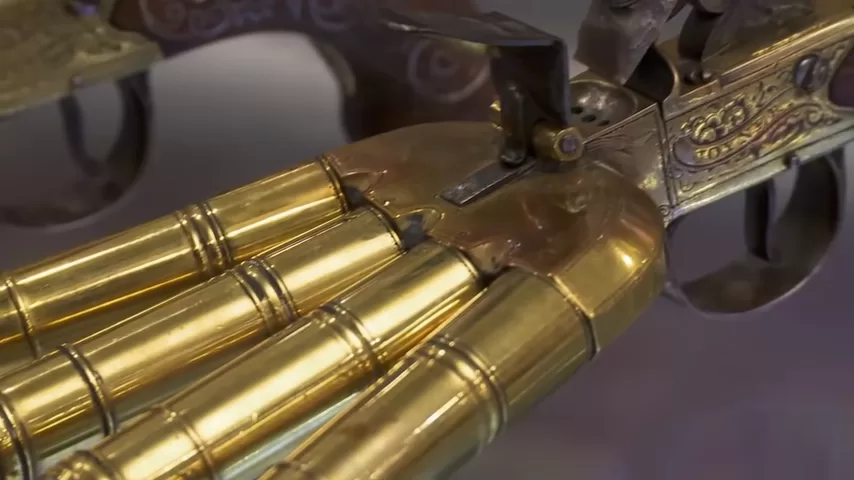
And surprisingly? He might have had a point.
“These are some of the coolest guns I’ve ever seen walk through the door,” the shopkeeper admitted. “It looks like a duck’s foot—but it hits like a cannon.”
From bizarre shape to battlefield purpose, these relics from the 18th century British Navy are the kind of collectible that turns heads, even before anyone finds out what they’re worth.
What Is a Duck Foot Pistol?
Duck foot pistols are one of the more unusual weapons in firearm history. Named for their spread-barrel design, these weapons typically have three to five barrels splayed out like webbed toes, designed to fire all at once.
They weren’t precision instruments—they were crowd control devices. Think of a tavern brawl, a ship mutiny, or a prison riot. If you were outnumbered and needed to level the odds fast, one shot from a duck foot pistol could clear a room—or at least make everyone think twice.
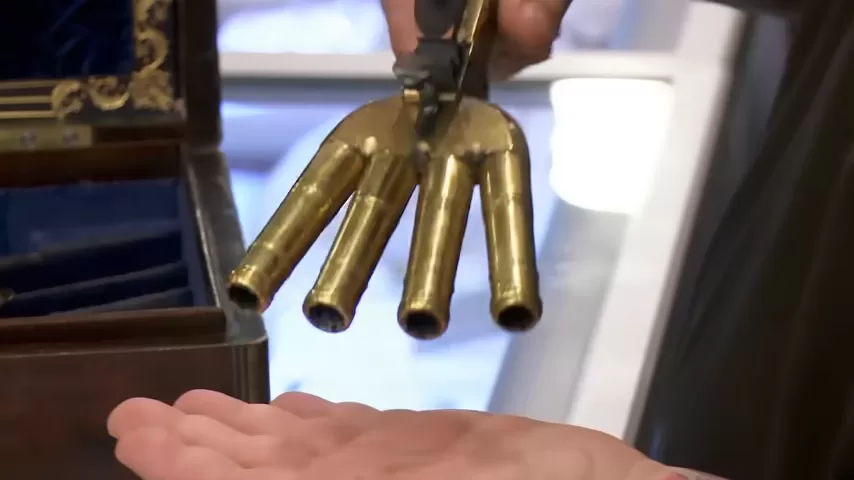
“One guy with a duck foot could hit multiple people in a single blast,” explained the firearms expert. “These were meant to end arguments before they started.”
The example brought into the shop was a British model, complete with the crown and “V” proof marks, indicating it had passed government inspection at a “proof house” in England—a legal requirement to ensure a weapon wouldn’t explode in its user’s hand.
From Attic Find to Firing Range
The seller wasn’t just bragging. He was willing to prove the guns still worked—by taking them to a firing range. And he invited the shop’s buyer to join him.
“He said 50,000 dollars,” the buyer recounted. “That’s a lot of money. So I needed to see if they really worked.”
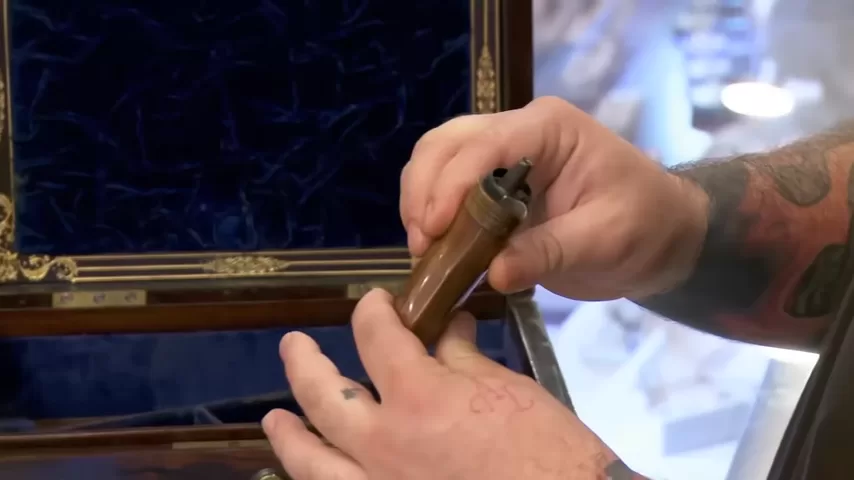
What followed was a test-fire straight out of a movie.
- Gun #1 fired cleanly.
- Gun #2? Not so accurate.
- One guy hit four targets, another hit just one—despite having four barrels.
It may not have been sniper-level accuracy, but the point was made: the volley pistols were real, and they worked.
A Gun So Cool It Brings Everyone to the Range
The evaluation was joined by a respected antique weapons expert, who confirmed both pistols were authentic, functional, and unusually well preserved.
“They’re early, they’re rare, they’re made by a known maker,” he said. “These are not inexpensive pistols.”
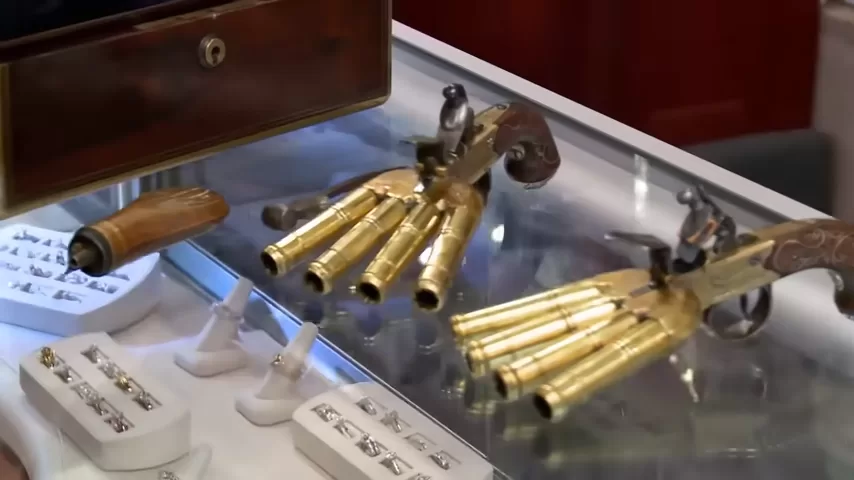
His appraisal? $45,000 for the pair.
Not quite the $50,000 the seller wanted, but close enough to warrant serious discussion.
Negotiation: A Price That Didn’t Stick the Landing
Armed with an expert valuation and a successful firing test, the seller was confident. But confidence doesn’t always guarantee a sale.
“What are you looking to get?”
“Fifty thousand.”
“I can’t pay that. I’m more in the $20,000 range.”
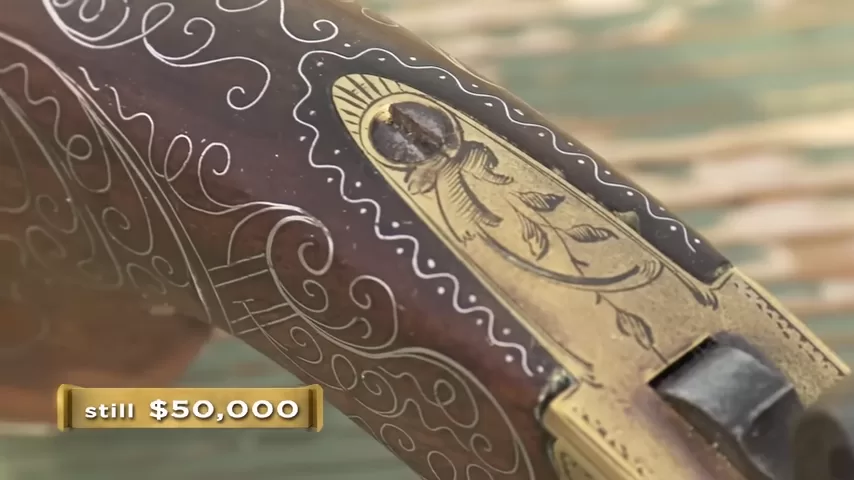
A tense negotiation followed.
- Seller counters: $40,000
- Shop offers: $30,000
- Final offer rejected: Seller walks
In the end, $5,000 separated deal from deadlock.
Why These Pistols Matter
While odd-looking, volley pistols are fascinating historical artifacts. Unlike standard dueling pistols or military flintlocks, these were designed with a psychological impact in mind. The sight alone—multiple barrels aimed in multiple directions—was enough to inspire caution, if not outright surrender.
These pistols were particularly favored by:
- Naval officers
- Bank guards
- Prison wardens
- Court bailiffs
The pair shown in the shop had original brass frames, matching proof marks, and functional firing mechanisms—traits that make them extraordinarily rare as a matched set.
Current Market for Duck Foot Pistols
In recent years, interest in unusual antique firearms has surged. Collectors are no longer satisfied with just muskets or revolvers—they want oddities, stories, and rarity. That makes duck foot pistols a hot niche in antique arms auctions.
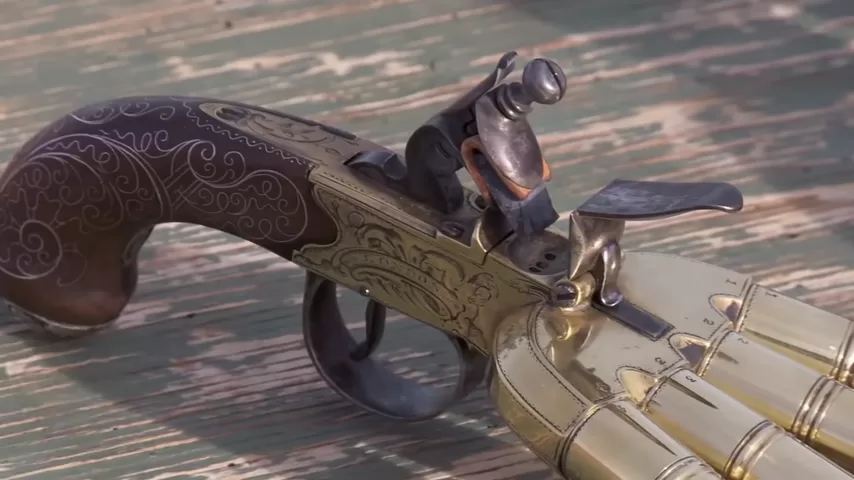
- Single examples (in working condition) have sold for $15,000–$25,000
- Matched pairs can go for $30,000–$50,000, depending on maker and provenance
- Rare examples with original cases, documents, or connections to notable historical figures can exceed $60,000
So while the seller walked away that day, he walked away with firepower in more ways than one.
Conclusion: The Coolest Gun You (Probably) Shouldn’t Fire
The duck foot pistol is one of the most memorable, visually arresting, and conversation-worthy weapons ever made. It’s not just a collector’s piece—it’s a story in metal.
Whether or not the pawn shop closed the deal, the takeaway was clear:
- These pistols are genuine 18th-century tech
- They still fire (ouch)
- They’re rare and valuable
- And they’re absolutely not for amateurs
“I couldn’t make the deal at 30,” the seller said. “But I won’t have trouble finding a buyer. These pistols speak for themselves.”
He’s right. And they speak loudly.
